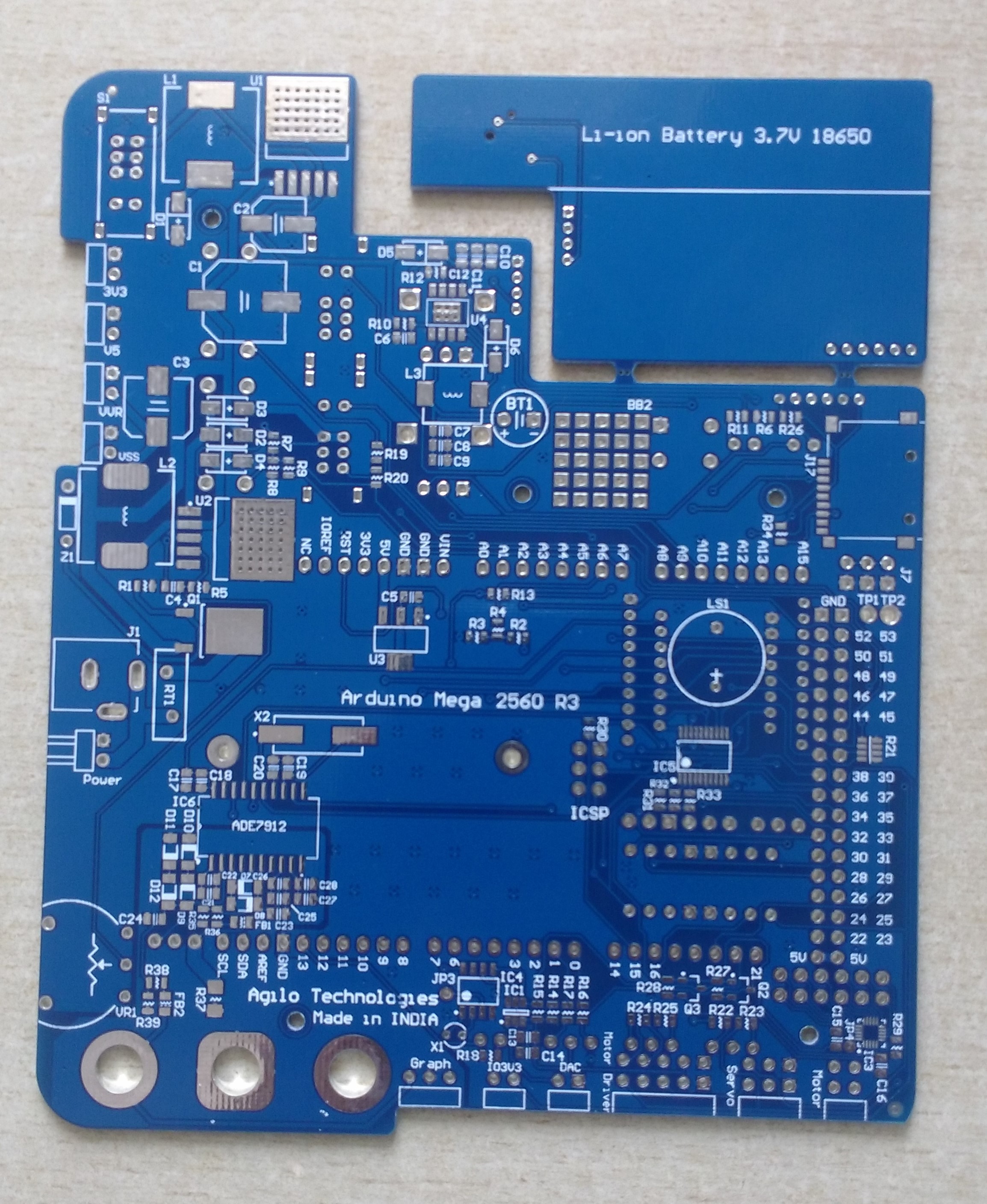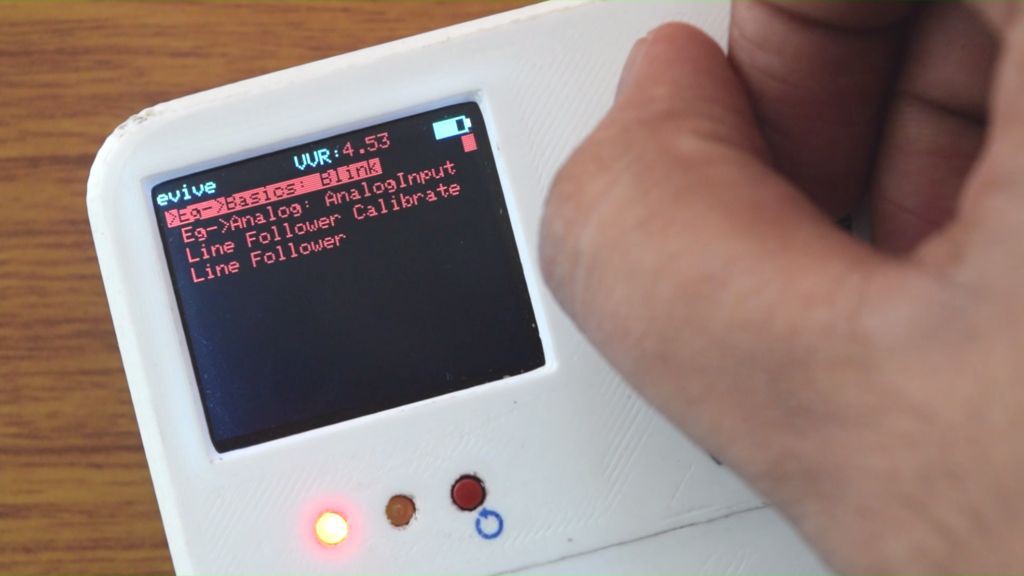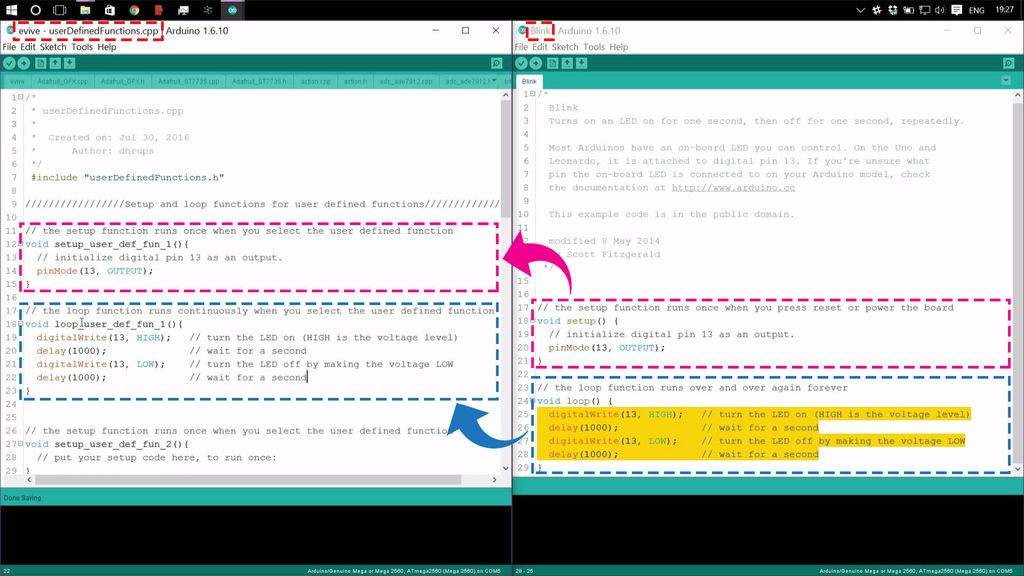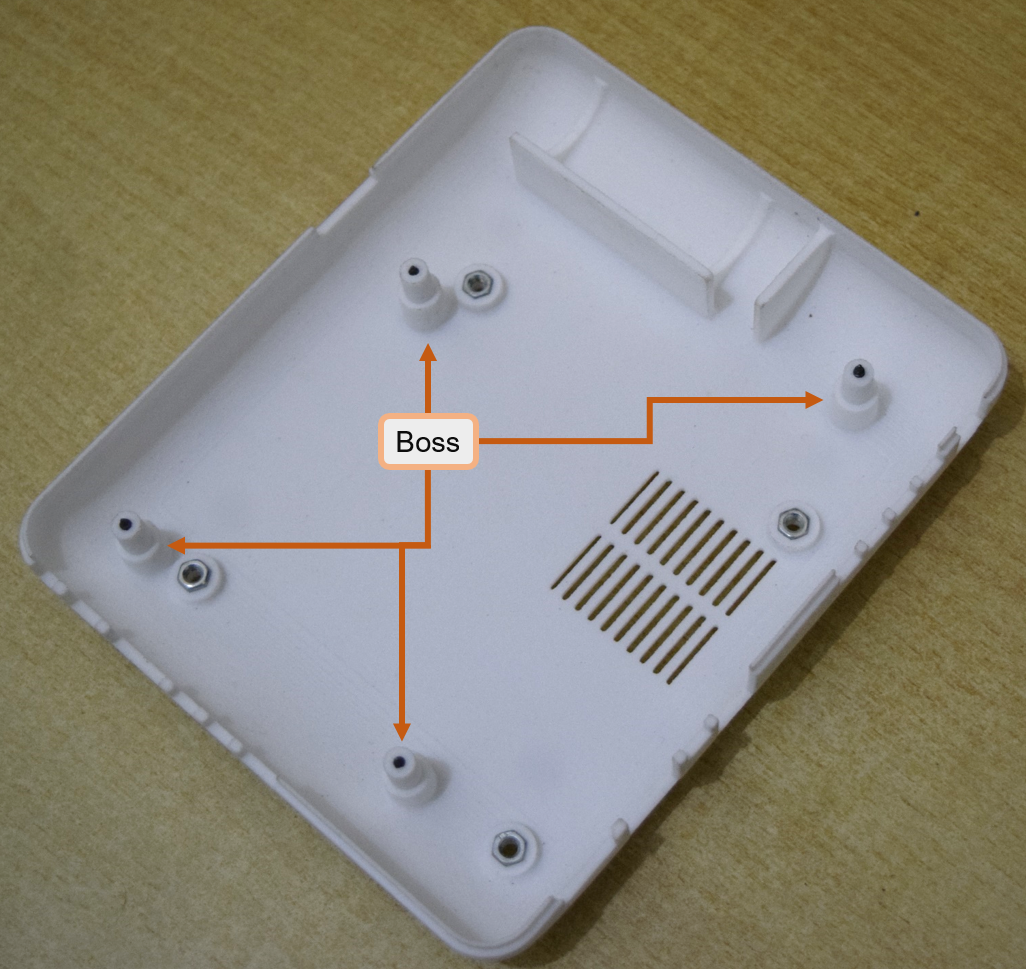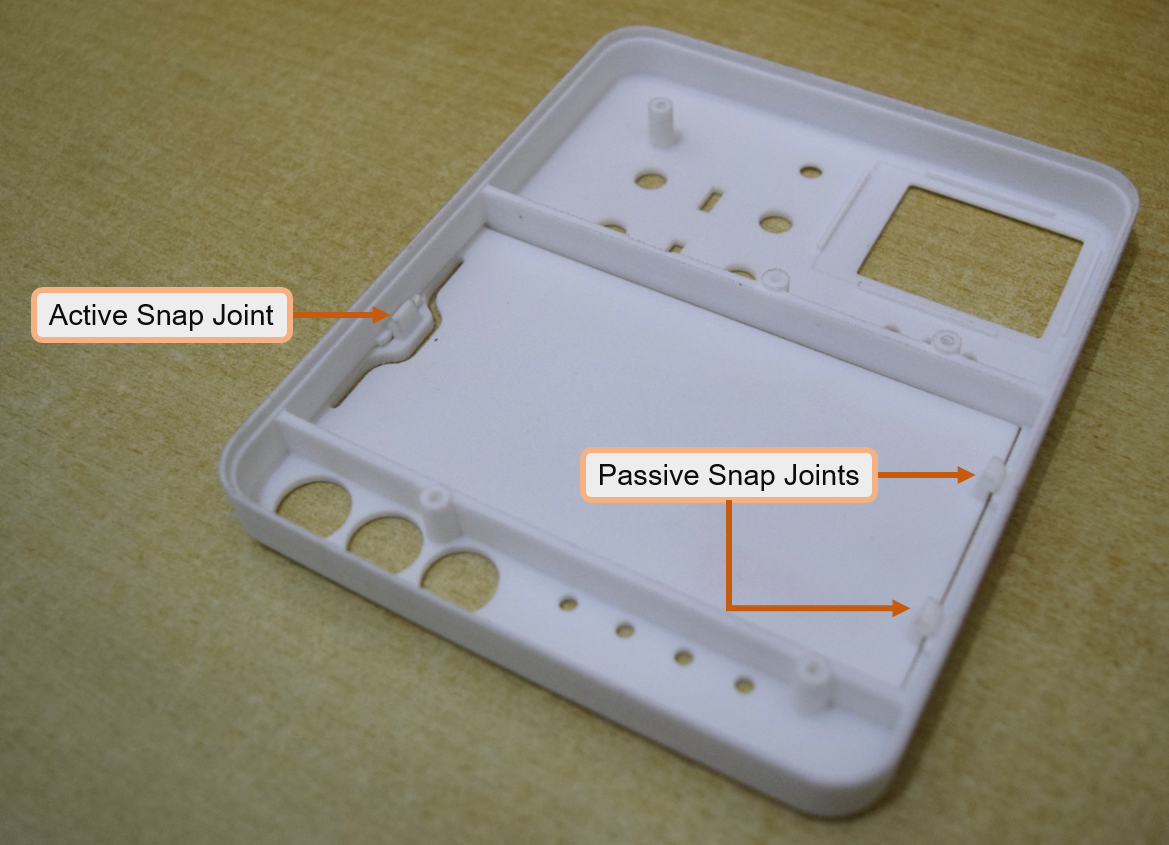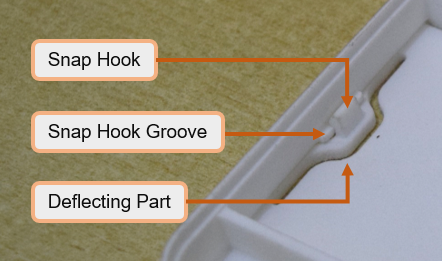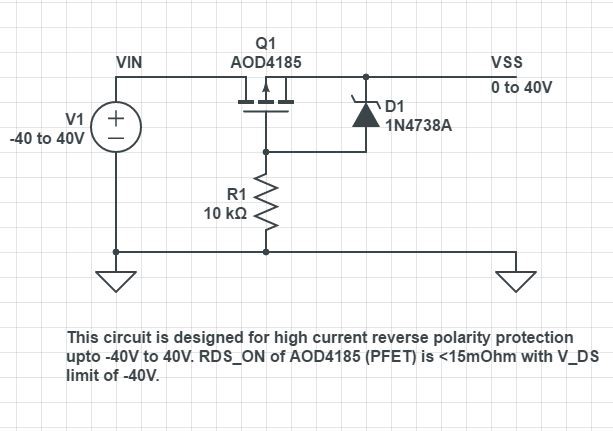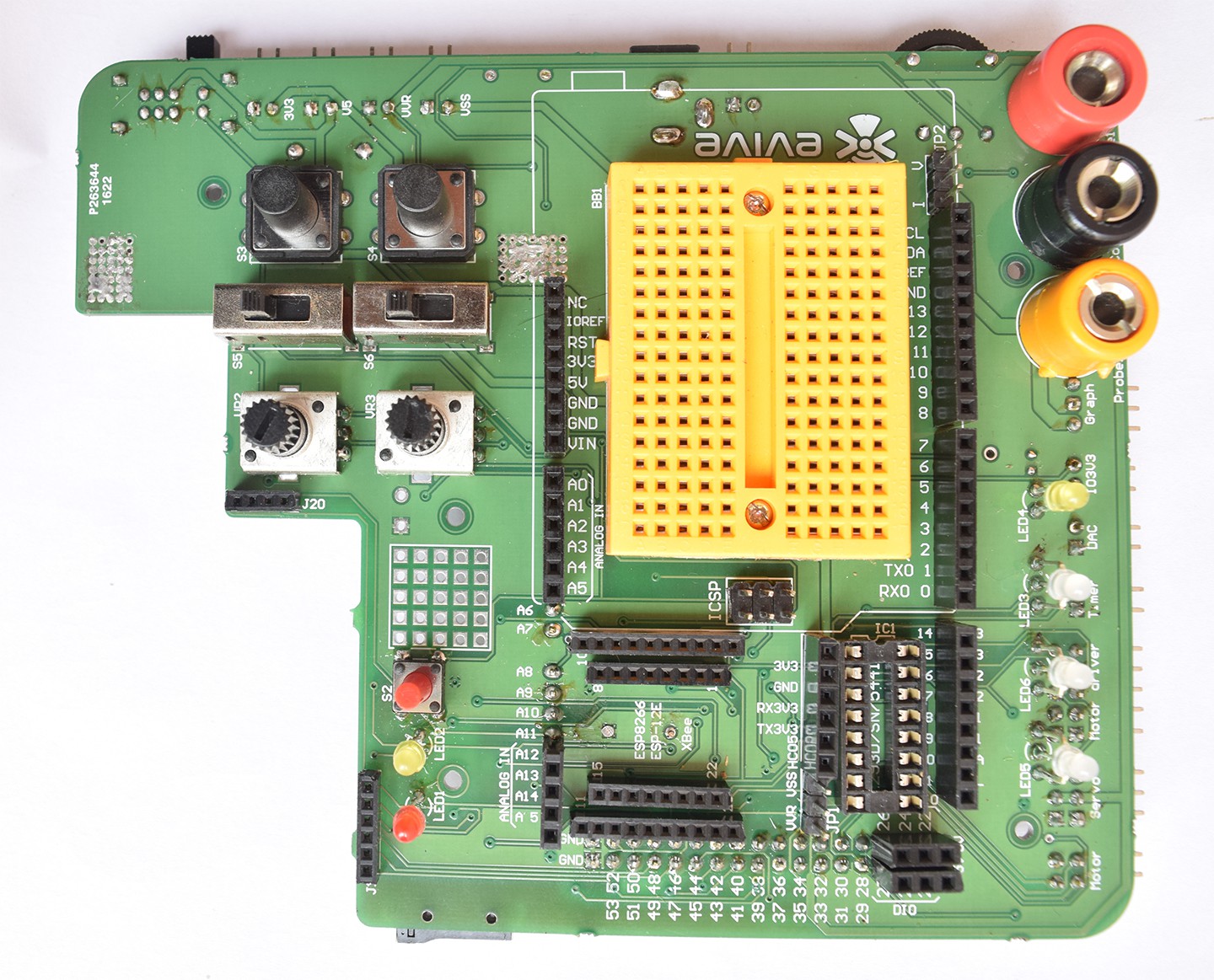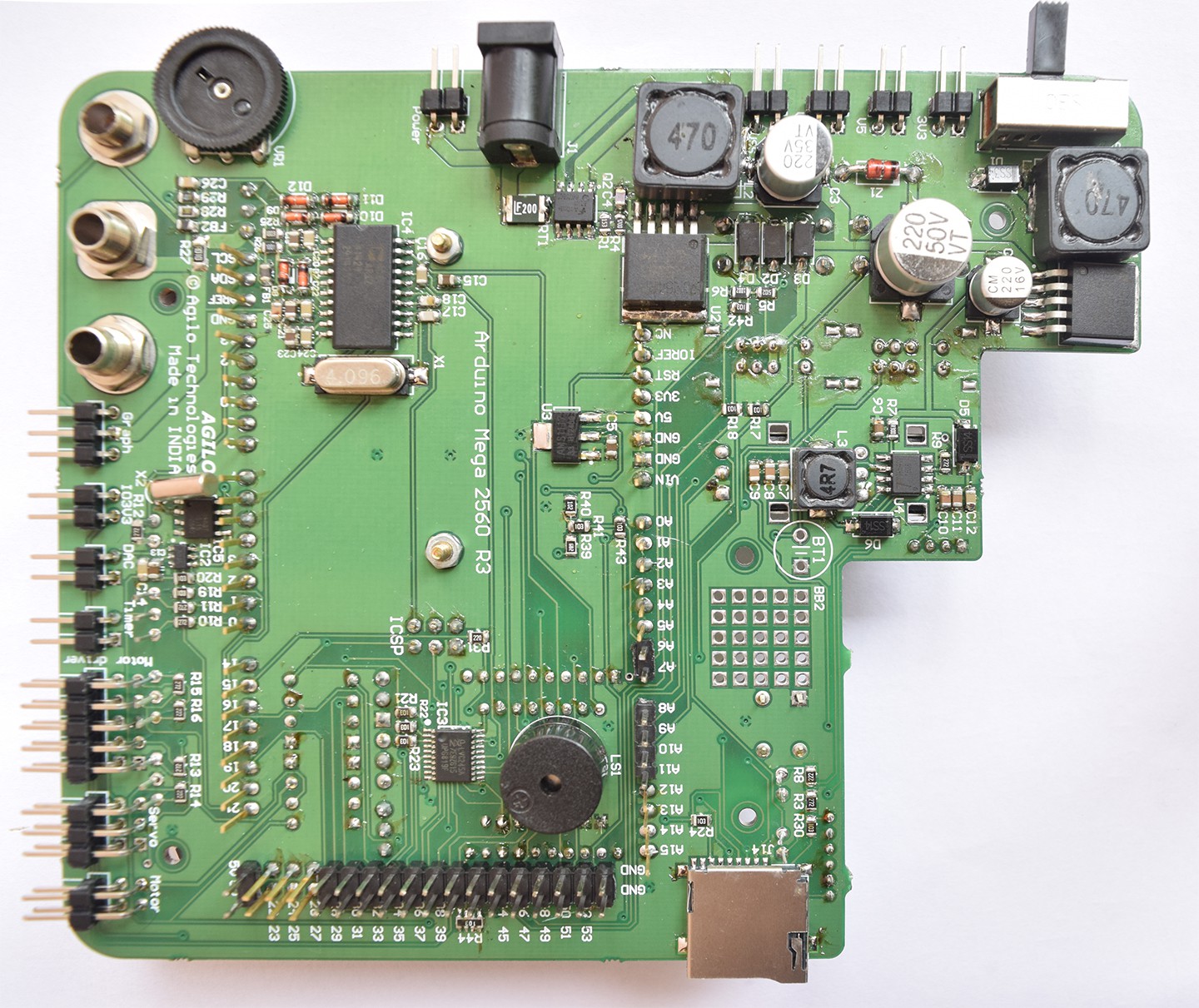-
evive | Starter Kit
07/31/2017 at 14:03 • 0 commentsevive Starter Kit comes with several basic electronics and mechanical components, which makes it very easy for students and beginners to get into the world of DIYing, electronics and robotics. Given below are few projects which you can make with evive Starter kit::
- Light Tracking Robot
- Automatic Railway Crossing System
- Alarm Clock and Timer
- Piano with fruits
- Smartphone controlled Mobile Robot
- Pick and Place Robot
- Line Follower Robot
- Obstacle Avoidance Robot
- Automated Sling Shot and many more
All the sensors and projects are compatible with Scratch. That means, you can make interactive games and animations in Scratch with evive. Also, you can program all your robots with Scratch.
To know more visit: https://www.tindie.com/products/evivetoolkit/evive--starter-kit/
-
Use Case: evive tweets using ESP 8266 Wi-Fi module
10/12/2016 at 09:52 • 0 commentsevive comes with on board Wi-Fi adapters making it perfect for IoT applications. This use case will demonstrate communication with ESP8266 via evive and using it for connecting your devices with the world. evive will tweet whatever you type on the attached keypad using your twitter account. ThingTweet app ( from Thingspeak ) has been integrated opening up immense possibilities for IoT applications. Use it to tweet sensor data, tweet today's weather, tweet security risks in your home and make evive your security buddy.
Visit here to explore more.
-
PCB fabrication and assembly
10/10/2016 at 19:45 • 0 commentsFor prototyping PCBs, there are lots of options from local vendors (like in India, PCB power) which deliver very fast within a week or international portals (like OSH Park, Elecrow and PCBWay) but have a long shipment delivery time (~ a month) for economical options.
We have used PCB power in India for multiple rounds of prototyping and they gives best quality PCBs and nearly on-time delivery. They have sufficiently good online portal for instant pricing and lots of options. But for bulk order, they seems little costly while Chinese options provides cheaper per piece price but takes lot shipping cost (and customs). So, it depends on locality and prior experience with particular vendor. We have tried PCBWay for prototyping and the quality and shipping time was good for India via DHL. I will recommend to try out the vendor for a small round of batch production before bulk manufacturing.
For assembly of SMD and TH components during the prototyping phase and small batch production, we have done it by hand soldering. We were advised to use components bigger than 0805 for resisters/capacitors, but based on package availability of ICs, we have to go to very low footprint size like 3 mm x 3 mm x 0.65 mm 20 lead QFN package (8mil distance between pads (edge to edge)), but surely we should avoid using QFN packages for hand soldering.
-
Uploading multiple arduino sketches simultaneously
10/10/2016 at 18:22 • 0 commentsOne of the most important feature of evive's menu interface is uploading multiple Arduino Sketches (programs) and change them without the need of re-programming. In the Arduino IDE, the user will add his custom codes in space provided in file named userDefinedFunctions.cpp in similar fashion to “void setup_user_defined_function(){….}” and “voidloop_user_defined_function(){….}”. And just upload the program to evive using Arduino IDE via USB cable. So the code with be available under the user defined menu list item. When the user will select that particular user defined function in the sub-menu of user defined function, the code will start running in loop.
-
Designing Boss for Casing
10/10/2016 at 18:15 • 0 commentsThere are lots of methods for PCB mounting in enclosures (casing) like snap fitting the PCB or mounting it using mounting holes (Boss) or using the standoff. Boss are a plastic feature for mechanical fastners.

For evive's PCB, we have used 4 mounting holes. The PCB is placed between the top and bottom plastic parts. The sandwiched PCB and casing are hold together using 4 bosses.
This tutorial explains some of these design aspects for plastic parts.
We have used self-threading screws of 2mm diameter as commonly used in electronics device enclosures. For designing the Boss, we have used this guide (or as per design catalogue of self-threading screw manufacturer)
-
Designing Snap joints for evive's lid
10/10/2016 at 17:44 • 0 commentsevive has a "magic lid" which enclose arduino shield stack space, IoT hub (Bluetooth, XBee and ESP8266 ESP 12e) and prototyping area. The lid has been provided with one snap joint from where the user will open and other two passive snaps for locking. Designing the snap joint took multiple iterations before the final Plastic Injection Molding using SLS 3D printing.
Snap joints are compliant mechanisms. A beginners guide for snap joint design can be found here.
The design parameters depends mostly on how easily/frequently we want to open the snap joint, the number of snap joints provided, material used and manufacturability.
A snap have two basic parts, Snap Hook and Snap Hook Groove. Usually snap hook are made flexible to get deflected and hence snapped. But in our design we have made the lid flexible (Deflecting Part), as the snaps are small in size as compared to the thickness of the case.
The problems faced by us includes interference of passive snap while removing the lid and hence wearing of groove in first iteration. It was corrected by providing proper clearance and fillets. Iterations helps us for reaching the final design of snaps.
-
Reverse Polarity protection for high current and voltage range
10/02/2016 at 08:16 • 0 commentsMany times we face the need of reverse polarity protection for our circuits. Even experts can made mistakes of connecting in reverse and blowing up the circuit. Since evive is desgined for all age groups including students starting their first step in hardware prototyping, so it was a MUST feature. We want to give working range of 30V and 3A.
Common method of doing this is by using a diode, but it has a voltage drop of 0.7V across it and eats up some power based on current flowing through it. evive's current rating is about 3A max. Hence it is not suitable for most of similar applications.
Another practical is way is by using PFET or NFET. (Reference: Section 3.3).
We used similar circuit as follows:
The reason for selection of AOD4185 is that its high current capacity, very low R_ds_on (~15mOhm), high V_ds limit in reverse (-40V) and cost effectiveness as it is largely used in TV LCD circuits.
The reason for using Zener diode D1 (of about 8~15V breakdown voltage) is the limit of V_gs of +-20V. But, we want to provide working range of 30V in evive. So this Zener diode will limit the voltage across the gate-source, while the resistor R1 will limit the current after zener breakdown.
[If someone want a smaller package of IC till absolute maximum of 30V range, than FDS6675bz (V_ds limit -30V) can also be used. We earlier tried with that, it was working ok for 40V foward bias and till -30V reverse bias. But on applying greater reverse voltage than -30V, the output started becoming negative as VSS ~= 30 - VIN, ie if we apply -36V than about -5V appeared. Hence we decided to use higher V_ds PFET]
The circuit is working absolutely fine and evive is now SAFE to reverse voltages till -40V :P
-
Enabling capacitive touch in evive
09/07/2016 at 08:06 • 0 commentsNow a days, lots of projects involves use of touch inputs as switches or sensors. Particularly, students are very crazy about using bananas or apple or a inked paper as switch for their DIY projects. So, We thought to include 12 capacitive touch inputs in evive.
It uses MPR121 IC with auto calibration feature for enabling touch inputs. It communicates to Arduino MEGA 2560 over IIC communication.
Along with TFT screen, buzzer, plug and play interface and touch, lots of interesting projects can be made. -
Precision Sensing using 24-bit isolated ADC (ADE7912)
08/13/2016 at 16:59 • 0 commentsOne drawback of ADCs in almost all development boards ranging from Arduino to Pi to Udoo is that its limited to 0 to 5 (or3.3V) and the accuracy is also not very good (~20mV). So we tried to have larger range and selected the Analog devices 24-bit dual channel isolated ADC (Analog to Digital Converter) ADE7912. Its a recently announced precision sensing and measuring IC, which is very fast and works with SPI communication. Its calibrated for range of -30V to +30V on one channel, while the other can be used for current sensing in range of -3A to +3A or voltage sensing in range of -5V to +5V. By isolated ADC, it means that even if the actual potential is like say 48V at some point and 20V at other, still it can work (something like differential ADC). Also the speed is also very fast and one data sample takes ~15us while in Arduino MEGA it takes ~112us. The accuracy is upto 3mV and 3A respectively and working to improve this.
Hence, we can use it like a voltmeter or ammeter or a mini oscilloscope (since we have a TFT screen also)
All the codes are available (opensource) at our Github repository: https://github.com/evivetoolkit/evive/tree/master/testCodes/testGraphingNavKeyADE7912
This video shows the working of evive as a mini oscilloscope (with limited frequency range): -
Procuring/Ordering components and parts for projects
08/13/2016 at 16:09 • 0 commentsOne of the important challenge we faced was to procure or order parts for prototyping some new design. Regularly we need to get new parts (which are not in our inventory :) ) as for product level development we need to iterate for making it robust and cost effective. So we have used following channels:
- Element 14 (Works very good in India)
- DigiKey (or Mouser)
- Aliexpress (the quality is decent, but sometimes the products are faulty)
- Analog Devices
- Texas Insturments
- [India] Lajpat Rai market, Chandani Chowk, Delhi
- [India] Nehru Nagar Market, Kanpur, India
Most of the ICs can be ordered as samples from the manufacturer website like Analog Devices and Texas Instruments. It was really helpful as they ship using very fast modes.
evive: a prototyping platform for makers
An open-source Arduino based toolkit to learn, build & debug electronics and robotics projects
 Dhrupal R Shah
Dhrupal R Shah